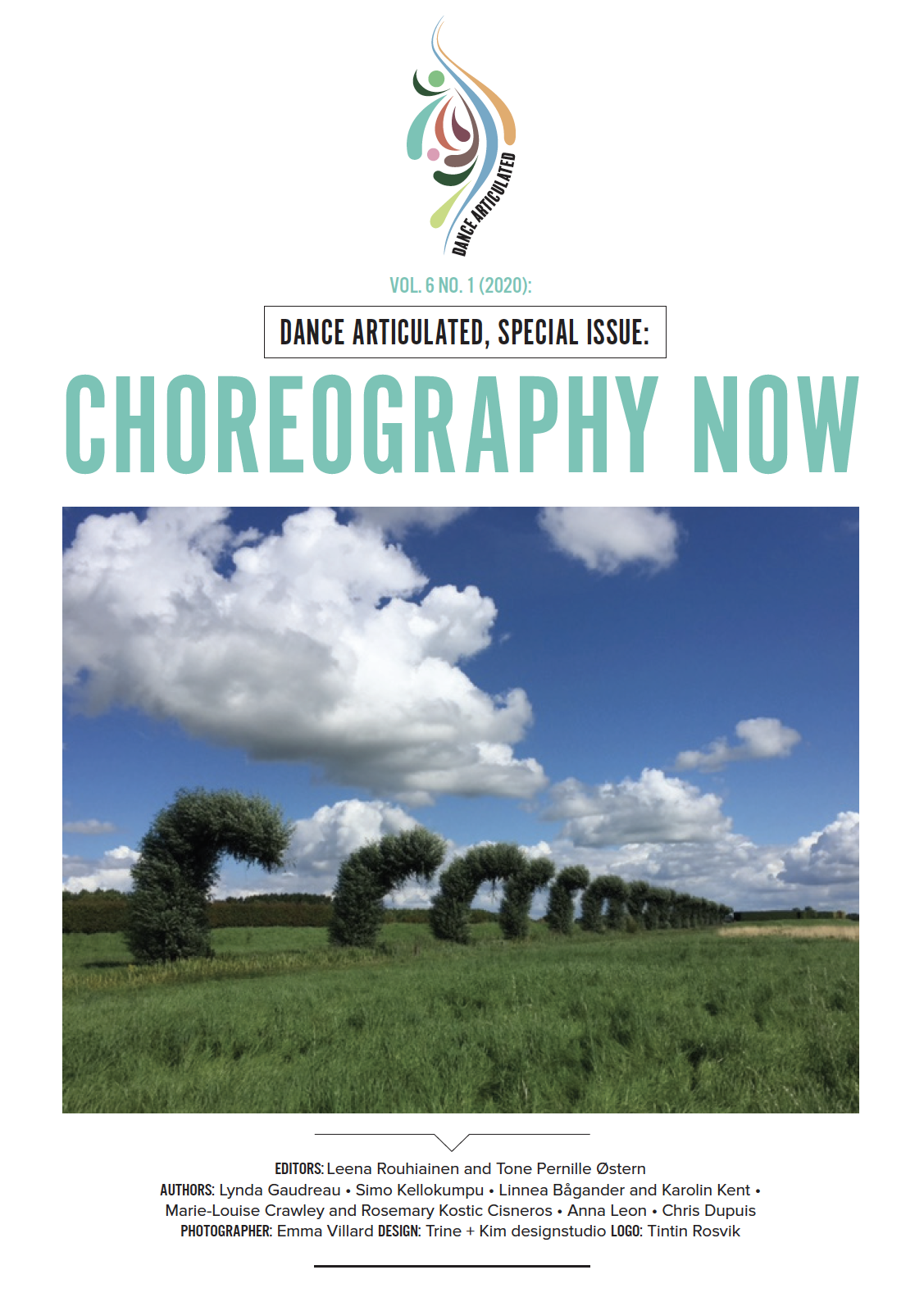Holding the space: Choreography, architecture and urban heritage
DOI:
https://doi.org/10.5324/da.v6i1.3638Keywords:
Architecture, choreography, Coventry, heritage, temporalityAbstract
This article responds to the interdisciplinary developments that choreography has undergone in the twenty-first century, in terms of a focus on relationships between dance, architecture, site and cultural heritage. It makes a claim for how choreography within the city manifests itself in the form of a public bodily act, as artistic boundary-crosser and socio-political agent. We explore this through the lens of a central case study: artist Anton Mirto’s Scaffolding (2019), a workshop-performance event for seven dancers sited within The Chapel of Many, an architectural installation by architect Sebastian Hicks and set inside the ruins of Coventry Cathedral (UK) as part of the Coventry Welcomes Festival’s Refugee Week. Grounded in an exploration of dance and architecture in terms of spatiotemporal relations following Rachel Sara’s (2015) framework of a transontology of architecture and dance and Rachel Hann’s (2019) concept of fast architecture, we argue for how the choreographic process of making Scaffolding speaks back to both the architectural space and the urban heritage site in which it is located and addresses a certain experience of temporality, history and memory. In turn, the potential political agency of such a performed conversation between architecture and choreography in the twenty-first century city is revealed.



